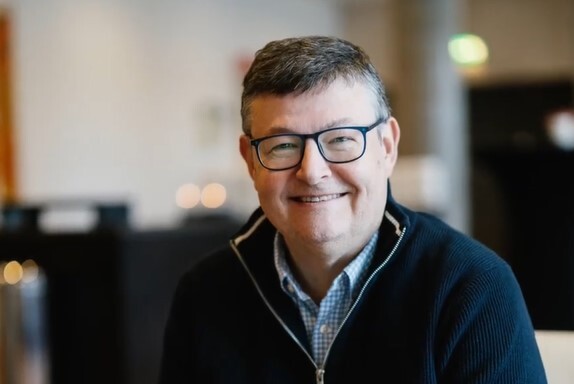
"We needed to develop a data center cooling solution that didn’t consume water"
Sep 16, 2024
Most inventions come about thanks to a problem that needs solving. SyCool cooling system from Munters is no exception. An increasing focus on sustainability among data center customers inspired the company's engineers to develop an energy-efficient, waterless-solution that was modular and adaptable to future liquid cooling demands.
It all started with a five-year drought in California and other states in the US (2012-2016).
"With growing concerns about water scarcity among our customers, we realized we needed to develop a data center cooling solution that didn't consume water," recalls Keith Dunnavant, Vice President Offer Strategy and Portfolio Management at Business Area Data Center Technologies.
Together with engineers from across the company, Keith traveled to Las Vegas to brainstorm the cooling system of the future.
"One of the ideas was to use thermosyphon technology," says Keith.
After developing several “proof of concepts” using thermosyphon principles, Munters R&D team finally landed on a system known today as “SyCool.”
How thermosyphons work
Thermosyphons transfer heat without the need for pumps. In SyCool, a specialized thermosyphon system uses refrigerant as the working fluid.
Here's how it works:
- Evaporation: Liquid refrigerant absorbs heat from a warmer fluid (air, liquid, or refrigerant) in the evaporator, turning it into vapor.
- Condensation: The vapor rises to a condenser on the roof, where it cools and turns back into liquid.
- Cycle: The liquid then flows back down by gravity to the evaporator, restarting the process.
SyCool uses a closed-loop system of pipes connecting the evaporator (heat source) and the condenser (heat rejection).
A key feature of SyCool is its ability to condense refrigerant in two ways:
- Passively, using outdoor air over condensing heat exchangers.
- Actively, with direct expansion refrigeration connected to brazed-plate heat exchangers.
Both methods work together automatically, without valves to switch between them.
Because pumps aren't needed and the heat exchangers have large surface areas, SyCool provides excellent energy efficiency and free cooling (economizer functionality).
A leap of faith
Despite its many advantages, SyCool was initially difficult for customers to adopt.
Data center customers are risk averse, and typically want to see equipment installed and running at a data center for years before committing. Nobody wants to be the first to adopt a new technology, regardless of how much it has been validated in test labs.
Eventually, an existing customer that had successfully deployed other data center cooling equipment from Munters decided to move forward with SyCool.
“They trusted our expertise,” says Keith. “With the ice broken, usually other orders follow, and that’s exactly what happened with SyCool.”
A blessing in disguise
The COVID pandemic could have hindered sales, but for Munters it was the opposite.
At the time, the data center industry was growing rapidly. They needed Munters systems to cool their facilities.
“Data center customers ordered large quantities of cooling systems to be delivered over several years,” says Keith. “And so that that's how we ended up securing the largest orders in our history, including numerous large SyCool orders.”
Today, Munters is regarded as a technology leader in the data center market.
“Our customers like the simplicity and modularity of our SyCool system," says Keith. "They like the fact that it is very energy efficient and cost competitive.”
But he is quick to point out that the R&D team is not resting on past achievements.
“We are working hard to expand the offering for air and liquid cooling systems, always innovating to be at the forefront of our industry.”
About Keith Dunnavant
-
Keith Dunnavant, P.E., Fellow ASHRAE, is the Vice President Offer Strategy & Portfolio Management at Business Area Data Center Technologies.
-
A mechanical engineering graduate from North Carolina State University, Keith has been engaged in the design and sale of energy efficient data center cooling systems for over twenty years.
-
He has more than 30 years of experience in engineered air handling solutions, involving air-to-air energy recovery, indirect & direct evaporative cooling, dehumidification, and precision air conditioning.
Learn more how we support the data industry here.

16603-en-adobestock_499830867.webp



